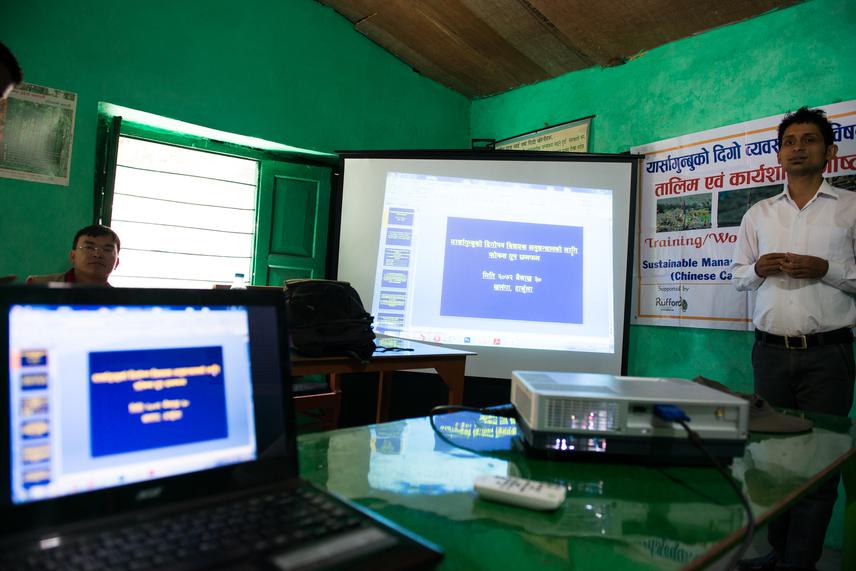Uttam Babu Shrestha
Other projects
23 Feb 2011
Sustaining Caterpillar Fungus, Cordyceps (Ophiocordyceps sinensis) for Mountain Life: A study of Ecology, Economics and Ethnobiology of Cordyceps in the Himalayas
25 Feb 2013
Distribution Modelling and Conservation of Caterpillar Fungus (Ophiocordyceps sinensis)
This research aims to understand the role of community-based institutions for sustainable management of Chinese Caterpillar fungus, a common pool resource using the social-ecological system (SES) framework

Our previous studies cautioned the depletion of Chinese caterpillar fungus in its natural habitats and alluded the emergence of local institutions for managing and regulating the harvest. Studies on common-pool resources (CPR) as similar as Chinese caterpillar fungus have shown that the role of such institutions is critical for sustainable resource management. Based on our preliminary observation, the roles and performances of those local institutions are highly variable in different localities which might lead divergent management outcomes. Influenced by the scholarly works on commons, this research is guided by following research questions: How have local institutions been managing and regulating the Chinese caterpillar fungus in different localities? Why do the social and ecological outcomes of Chinese caterpillar fungus vary in different villages? What are the institutional and governance arrangements that lead a ‘robust’ institution and produce ‘successful’ social and ecological outcomes? This research seeks to answer those research questions under the social-ecological system (SES) framework proposed by Ostrom (2007).
Although Chinese caterpillar fungus is a common pool resource, this system possess certain unique characters for example, resource is collected in a massive scale by tens of thousands of economically deprived harvesters, dependency of local communities to the resource is very high, regenerating process of the resource is unusual and market value of the resource is extraordinarily high. All makes this common pool resource exceptional than the previously studied common pool resources such as fisheries, pastures, lakes, irrigation systems elsewhere. Furthermore, commercial collection of this resource started about 15 years ago. Therefore, this system provides an opportunity to understand how does resource exploitation start and community institution evolve together.
This research will advance our understanding of the role of community-based institutions in managing Chinese caterpillar fungus, provide insights regarding the attributes of social-ecological system, and enhance our ability to predict the future trajectory of the fungus, its habitat, and dependent communities. Therefore, it will facilitate policy makers and resource managers towards sustainability of the resource and local livelihoods. Specifically, it will assist in designing evidence based conservation and management policies and programs, maximizing benefits of the local harvesters, and resolving the conflicts related to the fungus harvesting.